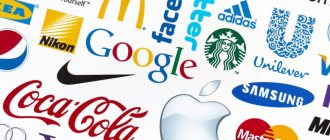Rebranding is an effective strategic tool in the toolkit of business owners and marketers. Like the impact driver, it is a very powerful tool when used in certain scenarios, but it can be damaging if used incorrectly. I was shocked that so many businesses on the Internet advocate rebranding because they want to sell their services. I needed to write the truth about the rebranding.
What it is
Each of us sooner or later is faced with the need to carry out renovations in a room. The original walls are no longer pleasing to the eye, and the soul demands changes, new colors in the interior.
Common situation? Then you will easily understand the essence of the concept of “rebranding”. In simple terms, rebranding can be considered an update, bringing something new to an established, beloved brand.
A certain transformation is taking place in what we have long been accustomed to encountering. Updating is sometimes necessary as a breath of fresh air, as it helps extend the life of the company and attract new audiences.
So, rebranding is a popular marketing strategy aimed at transforming a brand or its individual components, products sold, etc. The purpose of rebranding is to attract new customers, awakening the former interest of the company's regular consumers.
Why do most of even the most successful companies end up having to rebrand?
The thing is that in conditions of high competition and technology development, it is extremely difficult to concentrate the attention of customers on the product or service being produced. The needs and tastes of society are rapidly changing, and therefore the transformation of companies is inevitable.
Sometimes the consumer does not even immediately realize that the product he constantly purchases has undergone a transformation. Competent rebranding allows you to gradually introduce innovations, changing the corporate style and its individual elements. Typically, innovations occur once every two years; they cannot be called a full-fledged rebranding.
A course towards a complete change in the company's strategy, a change in the logo, slogan, trademark, sales concept - all this is the components of a large-scale rebranding. At the heart of this process are global ideological transformations that change the company forever and lead to significant results.
At what point does a company decide to undergo a rebranding procedure? Most often this happens when sales levels fall and yesterday's clients give preference to competing organizations. We are not talking about huge losses; the product is still profitable, but it does not arouse the initial interest of the audience.
What benefits does rebranding give to companies?
- Attracting new potential clients;
- Brand stability in the market;
- Interest from old customers;
- Formation of a new modern look for goods;
- Brand uniqueness;
- Increase in company income.
When we achieve our goals, we ultimately have an updated, competitive brand, which customers watch with increased interest.
CVS Pharmacy: Change Even If It's Unpopular
CVS Pharmacy is a chain of large pharmaceutical stores in the United States.
Problem : in American pharmacies you can buy everything from medicine to cigarettes. The very concept of a pharmacy is blurring.
Rebranding: The pharmacy chain CVS Pharmacy became the first in the United States to refuse to sell tobacco products - after all, it is a pharmacy, not a bar. To emphasize this, the chain changed its name from CVS Caremark to CVS Health.
Rebranding, strong support in social networks - and now the pharmacy chain already has more than 100,000 tweets and even a comment from the US President himself. Yes, smokers were unhappy at first. But in the long term, the network only benefited - its value proposition became more specific and recognizable.
Stages
In order for rebranding to bring maximum results, it is necessary to strictly follow the existing algorithm of actions. Otherwise, it is impossible to achieve your goals. Analysts identify four main stages of rebranding. They are interconnected and allow you to systematically achieve the desired result. We suggest further considering the basic stages.
Marketing audit
The first stage is fundamental and becomes the foundation for further building the company’s concept. Since, by signing up for rebranding, company executives thus want to increase demand for goods and increase revenues, it is necessary to carefully analyze the market situation. Analysis helps to identify a number of problems, as well as compare the organization’s work with the activities of competitors. What activities are included in a marketing audit?
- The brand is analyzed for recognition and profitability. This is how you can understand how recognizable a product is, what the consumer associates it with, and what emotions it evokes. This knowledge is necessary if the company wants to enter new markets;
- Identification of existing problems affecting brand awareness. System errors often lead to negative consequences, hindering the development of the company. To reach a new buyer, you need to clearly understand what mistakes were made earlier in your previous work;
- Analysis of the positive and negative aspects of the business. Helps to obtain an objective picture of the company’s position in the market. It often happens that a company and the products it sells do not meet the needs of the consumer due to outdated sales concepts.
The above points give a general picture, however, in order to obtain a more complete analysis, it is necessary to carry out meticulous work in the following directions:
- Consider the brand from the consumer's point of view. Analyze how close the company’s policy is to customers;
- Check the product for identity. In other words, to understand what associations a particular product evokes;
- Relationship between organization and consumer. Is there contact between them, can the buyer express wishes regarding the company’s work, make adjustments, and leave feedback. Does the company listen to consumers;
- Brand architecture. This refers to the brand logo itself, the features of its presentation (color, style, etc.)
- Company image. How effectively does brand advertising work, how does it influence consumer perception of the product;
- Analysis of competitors' activities. We compare the position of the organization in relation to identical companies.
Once all the necessary data is in the hands of specialists, a decision can be made about the need for a complete rebranding.
If the company’s concept is outdated, and the product itself no longer arouses initial interest, and there is no constant influx of new customers, then it’s time to move on to the next stage.
Repositioning
Situations often arise when a brand does not evoke any emotions in the consumer, which is even worse – it becomes a cause of irritation. Remember, perhaps there is a product on supermarket shelves that you basically avoid. Why is this happening? The reasons can be different: from low-quality raw materials, inflated costs to a banal glut of product or excessive PR on the part of the manufacturer. Any brand, even the most successful, is capable of experiencing a period of disinterest on the part of the buyer. At such a moment, brand repositioning comes to the rescue.
During repositioning, specialists use the following technologies:
- Transfer of goods from one sphere of use to another. For example, if we are talking about the production of a universal washing powder for the whole family, we can create a line of powder for washing children's clothes;
- We are adding new characteristics to the list of existing ones. Toothpaste now not only has a cleansing and whitening effect, but also helps strengthen gums;
- We identify completely new product qualities. You can focus on currently fashionable eco-friendly products that are absolutely safe for human health.
Repositioning does not change the production concept, however, it allows you to completely change the approach to presenting the product and its vision in the eyes of the buyer. In a similar way, you can “breathe” life into a popular product that has been deprived of attention from a new generation of consumers.
Restyling
We have smoothly approached the external components of the brand.
It is by changing the picture that you can attract attention, intrigue the buyer and increase the number of sales. Restyling can be called the process of transforming a logo, advertising banners and signs. Transformations can take place both comprehensively and individually.
In what case will it be necessary to resort to restyling?
- Over the years, the branding design has become outdated and out of date;
- The old product does not correspond to the modern brand concept. Since humanity does not stand still, it is extremely important to keep up with the times and offer new solutions and updated presentation of familiar products;
- Restyling helps prevent the emergence of “pirated” copies of well-known brands, which negatively affect the perception of the brand as a whole;
- Complex names cause antipathy, since in the information age the brain perceives short and understandable symbols more positively;
- Changing trends. It is worth understanding that culture is rapidly transforming and what was popular yesterday can cause ridicule today. Rebranding is extremely necessary for those companies that relied on the relevance of trends and did not have time to change their guidelines.
Professionals usually offer the customer several options for transforming the corporate style. Based on testing of each option, the most suitable one is identified. Visual attributes can be introduced gradually without a comprehensive change in corporate style, and they can also go through a stage of global transformation.
The choice of approach will depend on the company's ambitions and the goals that management has set for itself.
New brand perception
The last stage is decisive, and it allows you to show how relevant all the changes that have occurred to the brand are, what are the public reviews. It is not enough to simply change the signs by adding colors to the logo. It is important to conduct a structured, comprehensive advertising campaign, during which a potential buyer will become acquainted with the updated product.
Surely, you have encountered a situation where, while going out to buy your favorite coffee, you found on the store shelf the same brand of aromatic drink, but in an updated version. It immediately catches your eye, you notice that the packaging has been transformed, and, moreover, according to the manufacturer, this coffee is much better than the one you bought two weeks ago. In addition, it says that the manufacturer is now taking a fundamentally new approach to roasting beans! Agree, at this moment you experience a pleasant feeling, the new product pleases you and arouses genuine interest. In this case, the rebranding was successful, and the manufacturer’s goal was fulfilled: you became interested in the product and went to the checkout to pay for your purchase.
Not only the buyer, but also the company employees should become familiar with the updated product. This is necessary so that they clearly understand what goals the organization now pursues, for which the rebranding process was necessary.
Errors
There is an opinion among entrepreneurs that rebranding is guaranteed to bring additional profit and lead the company to prosperity. It is impossible to predict the outcome of an event 100%, but now we can talk about those system errors that often arise:
- Not taking the rebranding process seriously. By changing just the logo, you will not achieve the desired result. It is important to analyze what the buyer wants to see, what transformations he welcomes, and often these modifications do not concern the appearance of the product;
- Ignoring the position of workers. You should not rely solely on the opinion of marketers; sometimes, more valuable advice can be given by people who directly work with the product and know all the intricacies;
- Lack of contact between manufacturer and consumer. One of the common mistakes in Russia;
- "Fashion" for change. Changes are only necessary if the company really needs fundamental changes and cannot attract a new buyer;
- Mistakes in rebranding. Lack of awareness of the state of affairs in the company and superficial analysis lead to an unreasonable approach, ignoring the main mistakes in the organization’s activities;
- Unreasonable change of product name. In the pursuit of innovation, managers often neglect the opinions of customers or do not want to explain to the audience why certain changes have occurred, which leads to the loss of some customers.
Rebranding examples
In order to understand how rebranding works, it is necessary to analyze large companies that have gone through the rebranding process.
For example, the company selling Chupa-Chups candies, which has not undergone major changes since 1969. The edges of the logo were only slightly tinted, and the difference in fonts was equalized.
More serious changes affected the famous company Pepsi, which over the 117 years of its existence has rebranded the company 11 times. During the rebranding, the logo was changed and new slogans were used, such as “The original clean drink.” During its work, the company went bankrupt several times and merged with other companies several times, which in turn led to the emergence of a new ideology and expansion of the drink’s sales territory. Later, the company began to attract celebrities for promotions to increase sales and renew the brand.
The rebranding process is expensive and sometimes risky.
In order to have a bird in your hands, it is worth weighing all the pros and cons of holding such an event, involving competent specialists.
TOP 7 examples
Siberia – S7
S7 Airlines is one of the leaders in Russia in terms of passenger traffic and competes with dignity with Aeroflot. Until 2008, the company was presented under the name “Sibir”, but this beautiful name hid a number of failures. The company was famous for its far from perfect aircraft. At that moment, it was decided to completely rebrand the company. Today, the former Sibir attracts audiences with the bright rich colors of the aircraft, as well as a well-thought-out loyalty program.
The brand was completely transformed, the name S7 appeared, employees took advanced training courses and new, safer aircraft were purchased. Perhaps one of the best examples of rebranding in the Russian Federation.
Old Spice
The brand was quite successful among middle-aged men, however, the company's management decided to attract a new audience to the products. Until 2010, young people considered Old Spice to be an unmodern product, with a strong, “non-youth” smell. Then it was decided to launch an updated advertising campaign, the face of which was Isaiah Mustafa. The move was successful, and young men turned their attention to well-known products.
Harley-Davidson
The well-known company was on the verge of bankruptcy in 1985, debts were growing, and the credit of trust was completely exhausted. It was decided to rebrand, during which not only the quality of the motorcycles produced changed, but also the lost connection with customers was re-established.
Social advertising was used to encourage young people to give up useless and harmful monthly expenses and invest in the purchase of an expensive means of transportation. The action paid for itself, and the audience of buyers became noticeably “younger.”
McDonald's
The company has become associated among Americans with the disease of obesity, poor quality nutrition and low-quality food. A threat loomed over the once popular network, and the owners decided to reconsider their approach to product presentation. Now you can see low-calorie dishes in advertising, and the menu has been significantly expanded with salads, yoghurts and desserts.
An excellent example of how a company heard its consumer and took into account all the critical comments.
Corn Syrup
The phrase “high fructose syrup” does not evoke positive responses among the audience and even evokes thoughts of a drug. In order to successfully sell the product, it was decided to rename it “corn sugar.” It sounds more successful, attracting lovers of proper nutrition.
Sberbank
In 2009, Sberbank went through a number of important changes: the logo was changed, Internet banking was launched, corporate branches underwent a major overhaul, and the company's employees received a long-awaited lunch break. The changes benefited the bank; it got rid of Soviet “remnants”, received an updated, bright logo and satisfied employees.
The main success of Sberbank's rebranding lies in attracting younger clients as regular partners of the organization.
"Carat"
The Moscow Processed Cheese Factory has been producing classic cheeses “Yantar” and “Druzhba” for more than 80 years, without changing the concept or logo. In 2020, it was decided to finally carry out a full-scale rebranding. The plant has long been inferior to its competitors in many respects, so the list of products produced has changed significantly, and new, higher-quality items have appeared in it.
The brand has retained its logo, paying tribute to tradition. Only the style has changed, but the product from Karat is still recognizable.
Advantages and disadvantages
Rebranding, like any marketing tool, can help a company optimize costs, conquer new markets and attract additional funds. However, there are exceptions to the rules, since each organization is individual and the success of one does not guarantee 100% success of another company. Before resorting to the rebranding procedure, it is necessary to consider both its positive and negative sides.
Pros:
- The popular brand continues to exist on the market;
- Updating the advertising campaign that attracts the attention of customers;
- Rebranding will be less expensive for company owners than creating a new brand.
- Attracting new customers, resulting in increased sales.
Minuses:
- At the moment, the effectiveness of rebranding cannot be measured by any tools;
- It often turns into an end in itself; the company’s management does not understand the essence of the procedure, forgetting about the initial tasks.
Bonus:
But a bad example of rebranding is RadioShack.
RadioShack dreamed of becoming more than a store for tech geeks.
Rebranding and a new name - The Shack - did little to help the company. It was not associated with electrical engineering at all. The Shack (“shack” in translation) evokes associations with something strange, and it was the new name that buried the company’s reputation.
Adviсe
- You should not focus on gaining the interest of a new audience, as you risk losing contact with a trusted consumer;
- It is important to have a structured action plan, where each stage of rebranding will be described, and all possible options for the development of events will be considered. This approach will allow you to soberly assess your chances of success;
- It is necessary to seek the help of professional experts who have an excellent track record and positive reviews of their work;
- Ask several times about the need for rebranding. Perhaps it makes sense to use other marketing tools that will ensure an influx of new customers and brand popularity;
- Set a goal for yourself and go towards it, no matter what the circumstances.
Conclusion
Rebranding is a forced measure that promotes the development of the company. This is an effective marketing tool aimed at increasing the economic performance of an organization, regardless of its format and specialization. Properly executed rebranding will ensure an influx of new customers, as well as brand stability in the market. It is worth taking a serious approach to the issue of brand transformation in order to avoid serious mistakes and lead the company to success and prosperity.
“Most experts consider rebranding to be an effective tool in the fight for a new audience and additional profit. How do you feel about the rebranding process? Did our article help you look at rebranding mechanisms from a different angle?”
Rate this article:
[Total: 1 Average: 5/5] (Article Rating: 5 out of 5)
Author of the article Angela Karpacheva Freelancer
Where to direct the car or search for a new vector
The consumer's attitude towards a brand strongly depends on the motivating value embedded in the brand vector. The car will not reach the finish line if it is not pointed in the right direction. With a deep rebranding, it is possible to search for a radically new path to the finish line, which may even be accompanied by switching the brand to a different target audience. A new image is created by solving problems in a complex manner and usually includes restyling and redesign.
After the brand restart, advertising is launched with motivating factors that the consumer’s consciousness has adopted a new trend vector.









